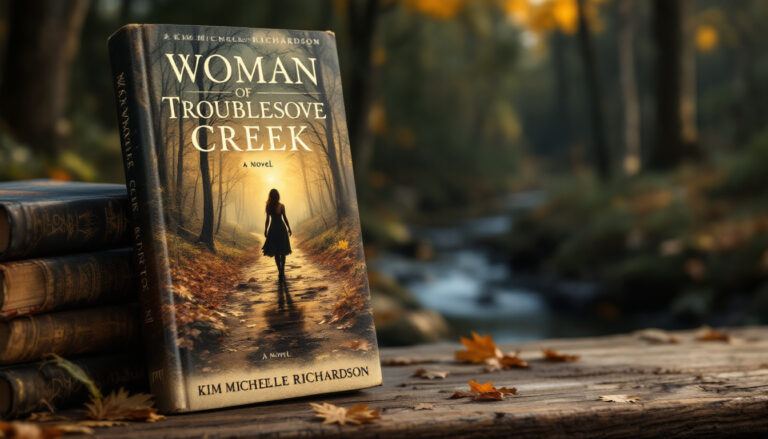Who Cooked the Last Supper? R. Miles take on Women’s History Review
Rosalind Miles’ Who Cooked the Last Supper? takes a fresh look at women’s history, opening up conversations about the often-overlooked roles women played throughout time. This book dives into various eras, highlighting the contributions and struggles of women that are too frequently ignored.
In the pages of this engaging read, Miles presents a narrative that seeks to challenge the traditional historical account. By framing women’s experiences within global contexts, she aims to reshape how we think about history itself. The relevance of this work is undeniable as it encourages readers to rethink societal roles and gender dynamics today.
Whether you’re a seasoned reader or just starting out, this review will unpack the themes and insights of Miles’ work, drawing connections to contemporary issues surrounding women. Get ready to uncover a compelling retelling that promises not just knowledge but a new perspective on the past.
Overview of the Book
Who Cooked the Last Supper? by Rosalind Miles is an engaging examination of women’s history, exploring their impactful roles throughout the ages. The book is divided into four main sections, each dedicated to a distinct historical period. This structure allows Miles to weave narratives that highlight the strengths, struggles, and contributions of women across different cultures and times.
The Sections of the Book
Miles divides the book into four primary sections:
- Prehistoric Times: This section delves into the early days of humanity, showcasing the essential roles women played in survival, community building, and the development of cultures. It paints a vivid picture of women as leaders and innovators long before recorded history.
- Classical Civilizations: Moving into ancient times, this part highlights influential figures of history, such as queens and matriarchs. Miles discusses how women navigated societal expectations and left their mark on governance, religion, and trade.
- Medieval to Renaissance Era: This section explores the significant shifts in women’s roles from the medieval ages through the Renaissance. The juxtaposition of power dynamics and creativity reveals how women influenced art, literature, and science, often against the backdrop of societal constraints.
- Modern Times: The final part underscores the fight for rights and recognition that women undertook in more contemporary history. It reflects on the movements that shaped the modern understanding of gender equality and the importance of women’s voices in social change.
For a deeper understanding of its structured narrative, visit Goodreads.
Key Themes
Throughout Who Cooked the Last Supper?, several vital themes emerge:
- Role of Women in History: At the heart of Miles’ narrative is the assertion that women have always played crucial roles in shaping history, yet their contributions are frequently overlooked. She urges readers to acknowledge and appreciate the legacies of women who have altered the course of events.
- Religion and Mythology: Miles examines how religious beliefs and myths have historically influenced women’s roles. The contrast between divine representation and societal position reveals a complex relationship that continues to affect women’s status in many cultures.
- Societal Change: The book also addresses the evolution of societal norms regarding gender. Miles challenges the status quo by illustrating how women have been agents of change, contributing to significant shifts in social structures and norms.
These themes resonate strongly, encouraging readers to think critically about how past experiences shape current gender dynamics. For insights into critiques of these themes, explore The Literary Omnivore.
Critiques and Praise
As readers dive into Who Cooked the Last Supper?, reactions to the book span a wide spectrum. While many appreciate Miles’ fresh approach to women’s history, others raise critical concerns about historical accuracy and biases. Let’s break down the critiques and praise this book has received.
Historical Accuracy
One of the significant critiques centers on historical accuracy. Readers have pointed out that some claims in the book may lack solid backing or come off as oversimplifications. For instance, critics argue that Miles sometimes cherry-picks facts or presents them without adequate context. This has led to questions about the credibility of her historical narrative.
- Western Bias: Suggestions of a Western bias have also emerged. Some critics feel that the book predominantly reflects Western perspectives, potentially ignoring broader global contexts. This can distort readers’ understanding of women’s roles across different cultures.
- Easily Falsifiable Facts: There are claims that some statements in the book are easily disputable. For those looking for rigorously researched history, this can be frustrating. For more on this perspective, see reviews on Goodreads.
Conversely, supporters argue that despite some inaccuracies, the book encourages readers to look more closely at women’s contributions throughout history. They believe the spirit of the narrative can spark engaging discussions about the roles women have played, even if the details are sometimes contentious.
Impact on Readers
Despite mixed reviews, Who Cooked the Last Supper? clearly leaves a mark on its audience. Many readers find it a refreshing challenge to conventional historical narratives.
- Encouraging Critical Thinking: The book often prompts readers to question mainstream ideas about history. By presenting women’s stories that are usually overlooked, Miles invites readers to rethink their understanding of the past. It’s an engaging way to provoke thought and discussion.
- Broader Perspectives: For some, the narrative is an eye-opener. As Miles dives into various historical periods, she shines a light on women’s roles that often go unnoticed. This approach encourages readers to consider not just what they’ve learned in school, but also the narratives that have been absent. You can explore these discussions in depth through sources like The Literary Omnivore.
In conclusion, whether praised for its engaging narrative style or critiqued for its historical inaccuracies, Who Cooked the Last Supper? opens up vital conversations. It’s a book that can either inspire a deeper interest in women’s history or lead to healthier skepticism about the accounts we accept as fact.
Comparison to Other Works
When considering Who Cooked the Last Supper? by Rosalind Miles, it’s important to see how it fits into a larger conversation about women’s history and feminism. This book doesn’t just stand alone; it dialogues with other influential works that offer various angles on similar topics.
Similar Books
Several notable works in women’s history and feminism provide different perspectives while tackling themes similar to those found in Miles’ book. Here are some you might find engaging:
- The Second Sex by Simone de Beauvoir: This classic text explores the oppression of women and contributes to existentialist and feminist thought. Beauvoir’s detailed examination helps to spotlight the societal constructs that define women’s roles.
- Women, Race, & Class by Angela Davis: Davis examines the intersections of race, gender, and class, focusing on the history of the feminist movement in the U.S. Her insights challenge the notion that women’s issues exist in a vacuum, bringing in the complexities of race and class.
- Ain’t I a Woman? by Bell Hooks: Hooks critically analyzes the impact of sexism on black women. This work is vital for understanding how race shapes feminist experiences.
- Feminism is for Everybody by bell hooks: In this concise and accessible book, hooks breaks down feminist principles, making them approachable for a wider audience.
For more well-rounded selections, consider visiting 40 Essential Feminist Books.
Differing Approaches
Miles’ narrative style sets her apart from more straightforward historical accounts. Instead of providing a dry recounting of dates and events, she weaves in stories and personal experiences. This method invites the reader to connect emotionally with the subject matter.
Consider the contrast with more traditional historical works. These often focus on documenting facts in a linear manner, leaving little room for the nuances of individual experiences. Miles, on the other hand, offers a more reflective and engaging narrative:
- Storytelling vs. Chronological Listing: While historical accounts may catalog events, Miles brings history to life through storytelling. This allows readers to see the humanity behind the historical figures, making it relatable.
- Focus on Experience: Where many historical texts might center on the achievements of men, Miles highlights women’s contributions and struggles. This perspective flips the script and challenges preconceived notions about history being solely a male narrative.
Engage with a broader view of women’s contribution to history by exploring articles like The Position of Women in History which showcases how women’s roles have been historically downplayed.
In this way, Who Cooked the Last Supper? provides a refreshing take that not only informs but also invites readers to reconsider how they view women’s history overall.
Conclusion and Recommendation
As we reflect on Rosalind Miles’ Who Cooked the Last Supper?, it’s clear that the book offers a unique standpoint on women’s history. While it has its criticisms, the engaging storytelling and fresh perspectives make it a valuable addition to discussions surrounding gender and history.
Summary of Thoughts
The book is structured in a way that encourages readers to journey through different eras, highlighting influential women who have shaped society. Miles’ approach to women’s roles adds depth to the often linear narratives we learn in traditional history. However, some of her interpretations may raise eyebrows. Critics point out potential inaccuracies and a Western-centric viewpoint, which can cause readers to question the reliability of the information presented.
Despite these critiques, many appreciate the book’s ability to spark dialogue. It challenges readers to think critically about the underrepresentation of women in history, making it a thought-provoking read.
Who Should Read This Book?
Who Cooked the Last Supper? is ideal for:
- History Aficionados: If you enjoy exploring new angles on historical narratives, this book will offer fresh insights.
- Feminism Enthusiasts: Readers interested in women’s rights and equality will find valuable contexts that enrich their understanding of gender dynamics.
- Casual Readers: Accessible language and engaging storytelling make it suitable for those new to reading on historical topics.
However, if you prefer rigorously factual accounts, you might find yourself frustrated with some of the book’s claims.
Final Recommendation
In conclusion, I recommend Who Cooked the Last Supper? for anyone looking to expand their understanding of women’s roles in history. While it may not be flawless, the book invites readers to question and discuss the narratives that often go unchallenged. If you’re intrigued by women’s contributions throughout the ages, it’s definitely worth picking up. For more perspectives on the book, you can check reviews on Goodreads or read further critiques on The Literary Omnivore.
Whether you’re diving into women’s history for the first time or looking to add to your existing knowledge, Who Cooked the Last Supper? offers a refreshing take that can inspire deeper engagement with the past.
Conclusion
Rosalind Miles’ Who Cooked the Last Supper? stands as a provocative work in feminist literature. By shining a light on the often-unacknowledged roles of women across history, it invites readers to reconsider the narratives that have shaped our understanding of the past.
This book is not just a recounting of events; it encourages thoughtful discussion about gender dynamics that persist today. Despite criticisms regarding its historical accuracy and focus, its ability to stimulate critical thinking about women’s contributions is invaluable.
For anyone curious about how history has overlooked women, this book is a worthwhile read. What do you think? How do you see the impact of women’s history in shaping today’s society? Share your thoughts, and continue exploring the rich tapestry of women’s roles in history.







